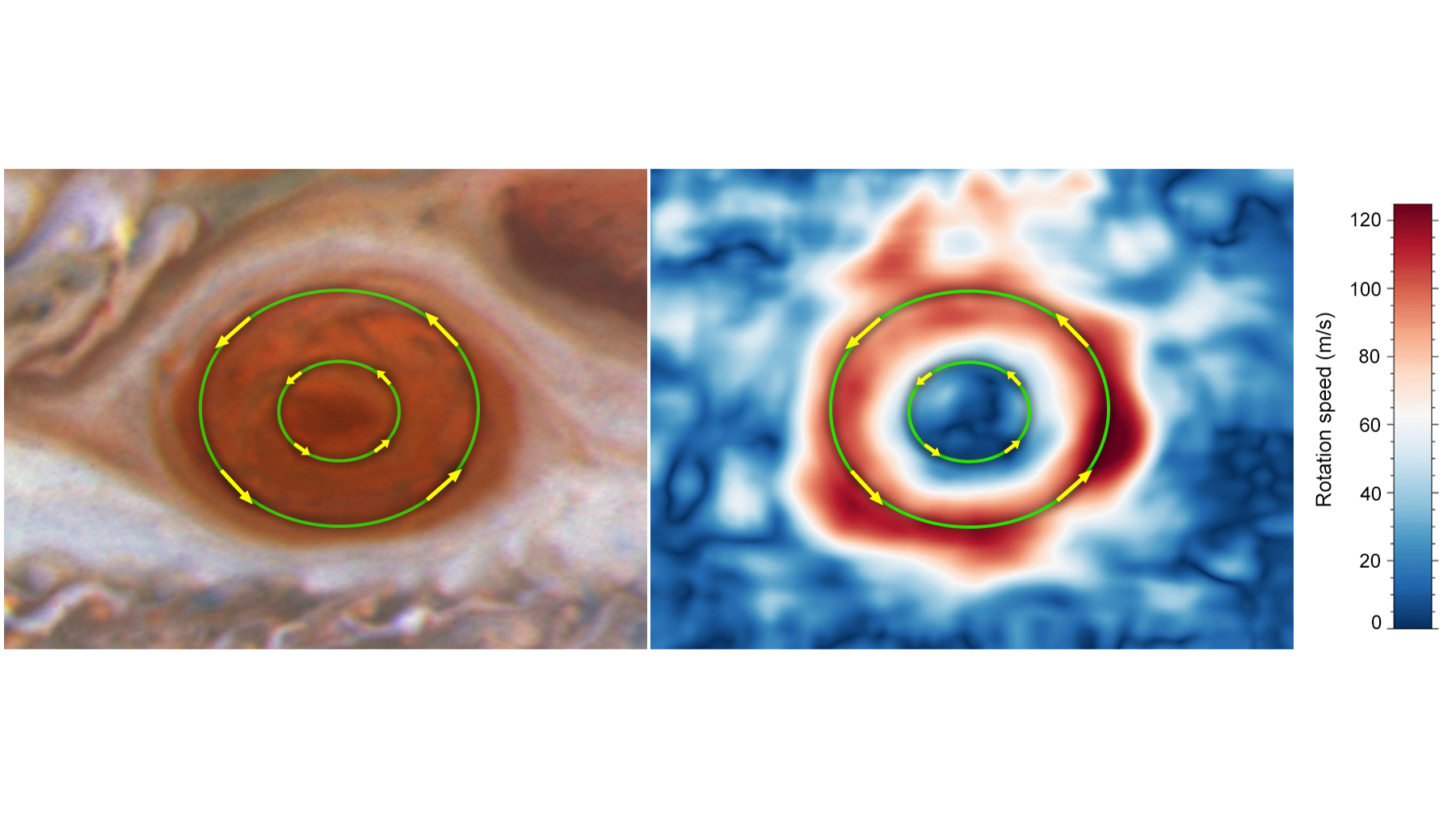Jupiter's winds of change show increased storm speeds in Great Red Spot
A decade of Jovian storm-chasing paid off for the Hubble Space Telescope.
The long-running telescope has been studying the Great Red Spot — a major storm on Jupiter — that is shrinking for mysterious reasons. Alongside that, researchers just uncovered huge changes in wind speeds within the massive storm.
Jupiter takes 12 Earth years to orbit the sun. During the Jovian year between 2009 and 2020, Hubble found, winds in the outer ring of the Great Red Spot increased by up to 8%. While the wind speed varied depending on when Hubble was looking at the storm, the telescope did track long-term increases in the rotation speed of the outer ring.
Related: Photos of Jupiter's Great Red Spot, the solar system's biggest storm

A typical outer ring wind speed today easily exceeds 100 meters per second (223 mph or 360 kph), while a decade ago the range often went into the low 90s of meters per second (roughly 200 mph or 324 kph.)
The storm is larger than planet Earth, and astronomers have been observing it regularly for more than 150 years — with occasional other observations as early as the 1600s — providing evidence of change over a relatively long time. The storm speeds are incredible compared to what we see on Earth, but at Jupiter the typical increase was less than 1.6 mph (2.6 kph) per Earth year, the researchers said in a statement.
"When I initially saw the results, I asked 'Does this make sense?' No one has ever seen this before,'" lead author Michael Wong, a planetary scientist at the University of California, Berkeley, said in the statement.
Get the Space.com Newsletter
Breaking space news, the latest updates on rocket launches, skywatching events and more!

But Wong and other researchers said the Hubble Space Telescope's precision and long-running records of observations allowed ample confirmation, alongside a software data analysis that tracked tens of thousands to hundreds of thousands of wind vectors (directions and speeds) during Jupiter observations.
The researchers are struggling to understand why the increase is happening, as Hubble cannot peer into the depths of the storm. "Anything below the cloud tops is invisible in the data," Wong said. "But it's an interesting piece of data that can help us understand what's fueling the Great Red Spot, and how it's maintaining energy."
NASA currently is running the Juno mission at Jupiter that has on occasion looked at the Great Red Spot, but the press release did not say if observations from this mission could assist in figuring out the windy mystery. Juno has already worked in tandem with Hubble and the Gemini Observatory in Hawaii to chart atmospheric and storm conditions on the giant planet. Juno also has peered deep into the Great Red Spot to chart the depths of the storm.
Most of the research came from Hubble's Outer Planets Atmospheres Legacy (OPAL) program, which allows the telescope to monitor weather conditions at the outer planets by committing to observations at least once a year. The program includes Jupiter, Saturn, Uranus and Neptune and also provides context for how huge exoplanets may work, as they are far outside our solar system and beyond close-up observations with current technology.
A paper based on the research was published last month in Geophysical Research Letters.
Follow Elizabeth Howell on Twitter @howellspace. Follow us on Twitter @Spacedotcom and on Facebook.
Join our Space Forums to keep talking space on the latest missions, night sky and more! And if you have a news tip, correction or comment, let us know at: community@space.com.

Elizabeth Howell (she/her), Ph.D., was a staff writer in the spaceflight channel between 2022 and 2024 specializing in Canadian space news. She was contributing writer for Space.com for 10 years from 2012 to 2024. Elizabeth's reporting includes multiple exclusives with the White House, leading world coverage about a lost-and-found space tomato on the International Space Station, witnessing five human spaceflight launches on two continents, flying parabolic, working inside a spacesuit, and participating in a simulated Mars mission. Her latest book, "Why Am I Taller?" (ECW Press, 2022) is co-written with astronaut Dave Williams.









